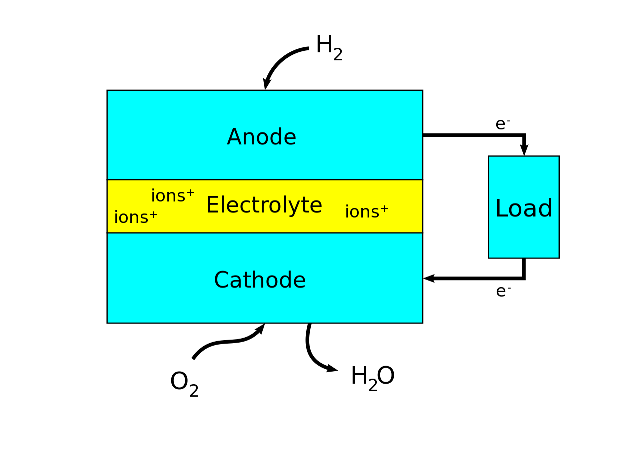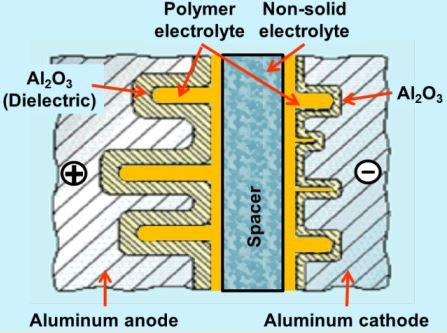Why Aqueous Battery Can Easily Replace Lithium-ion Battery Technology
Many of our personal devices and electronics are powered by the very popular Lithium-ion batteries. The fame and popularity of the Li-ion batteries have made it almost difficult to think of any other practical and efficient battery power source for our portable digital devices.

Despite the usability and reliance on the Li-ion batteries, researchers have in recent times, sort for a much stable, long-lasting and highly durable battery energy source. So many scientists have been working on other alternative battery power source, such as aluminium-ion, lithium-metal, sodium-ion, and lithium-air. The expectation is that the research into this new battery power could yield a better power source for batteries to solve issues bedevilling our present day Li-ion batteries.
But first, what exactly is a Lithium-ion or Li-ion battery?
Li-ion batteries are very common in home electronics. The Lithium-ion (Li-ion) battery, known as a rechargeable battery, is composed of lithium ions, which during discharge, are transferred to the positive electrode from a negative electrode, and then back to the negative electrode when charging occurs.
Unlike metallic lithium which is used in non-rechargeable battery, the Li-ion batteries make use of an intercalated lithium compound as an electrode material. The components that make up the lithium-ion battery cell is the electrolyte which aids ionic movement and two electrodes.
What are the problems associated with Lithium-ion batteries?
Despite the uniqueness of the Li-ion batteries, they still have some disadvantages which include:
- The need for protection - Li-ion batteries aren't very robust like other battery forms and hence, need protection from overcharged or discharging to far?
- They suffer ageing - Like most tech devices, li-ion battery age. This is common as the batteries have discharge cycles
- Problem with transporting them - There are usually restrictions placed on transporting lithium batteries because they can experience short circuits
- They can be expensive - The cost of manufacturing the batteries is quite on the high-side , especially when they are to be mass-produced
- New versions are constantly churned out - The technology keeps changing all the time. Due to the fact that the Li-ion battery technology is still developing, the technology is never constant.
New Aqueous Battery Power is the latest battery power innovation
The aqueous hybrid capacitor, which is a new innovation developed by the Korean Advanced Institute of Science and Technology (KAIST) is reported to be stable and safe.
The new creation also boasts of a high energy and power density capable of recharging in just about 20 seconds.
The new aqueous battery technology makes use of liquid electrolyte which is sealed between an anode and cathode with special designs.
The anode has a high surface area and stores more energy; as it is created with a polymer chain material based on graphene.
The cathode material is made up of nanoparticles composed of nickel oxide which are laced on graphene.
The efficacy of the new battery device
Based on the new design and components assembled for the aqueous battery structure, the battery possesses a higher energy density, and compared to other aqueous batteries, the new device boasts of a faster energy exchange. It maintains a capacity of almost 100 percent over 100,000 redox cycles. It also has minimal energy loss, and is far more stable.
Due to its power density which is higher than similar designs by about 100 times, the battery can be charged for within 20 to 30 seconds with low-power systems such as the conventional USB charger.
During the testing phase, the research team coupled two of the batteries to a flexible photovoltaic cell. The kit was then worn like a hand sleeve and the device was able to power an LED.
Conclusion
The new technology is considered eco-friendly and highly applicable. It is also easily manufactured. From its several testing phases, it was shown to possess high stability and high capacity, compared to the available technologies. Its seemingly reliable features can contribute to the commercial adoption of the aqueous capacitors. Also, since the device can be charged rapidly using a low-power charging system, it certainly would then be suitable as a power source for portable electronic devices.
Image Source: 1, 2, 3
Resources:
- radio-electronics.com
- kaist.ac.kr
- Lithium-ion battery
- onlinelibrary.wiley.com
- Salt water battery
- batteryuniversity.com
- ultrathin flexible photovoltaic-cells.
- Aquion Energy
Thank you for your time and for reading my post.
If you found this post interesting, then kindly UPVOTE, RESTEEM and FOLLOW @rickie, for more quality posts.
You Can Check Out My Other Posts Below:
- Funny and Cheesy Science Jokes
- Part of the Brain That Kills Pain Can Provide Alternative To Opioid
- Daffodils - The New Battle Axe Against Cancer
- Illegal Animal Poachers Are In Trouble; As New Artificial Intelligence Is Set To Screw Them Up
- The Vision of Praying Mantis Can Inspire Simpler Vision-Processing For Robots
- Undiscovered and Unknown Viruses Can Now Be Hunted To End Global Viral Pandemic



This sounds fascinating, it would be great to not have to constantly plug in my phone or tablet all the time.
If they could implement it into care too it would change the world, being able to drive a car for days on just a minute charge.
Yea, i agree with you @jclark. A wide application of the tech device to various energy storage field would definitely change how we store and recharge battery energy for our various tech devices.
Does it mean the new ones would be less expensive than the ones we currently use?
Not at first @nigtroy. Its a business venture. So at first, the developers would sell at a fairly high rate to recoup investors funds. But eventually when it becomes popular and competition comes in, the price would drop down. Thanks for reading buddy.
You got a 41.32% upvote from @ipromote courtesy of @rickie!
If you believe this post is spam or abuse, please report it to our Discord #abuse channel.
If you want to support our Curation Digest or our Spam & Abuse prevention efforts, please vote @themarkymark as witness.